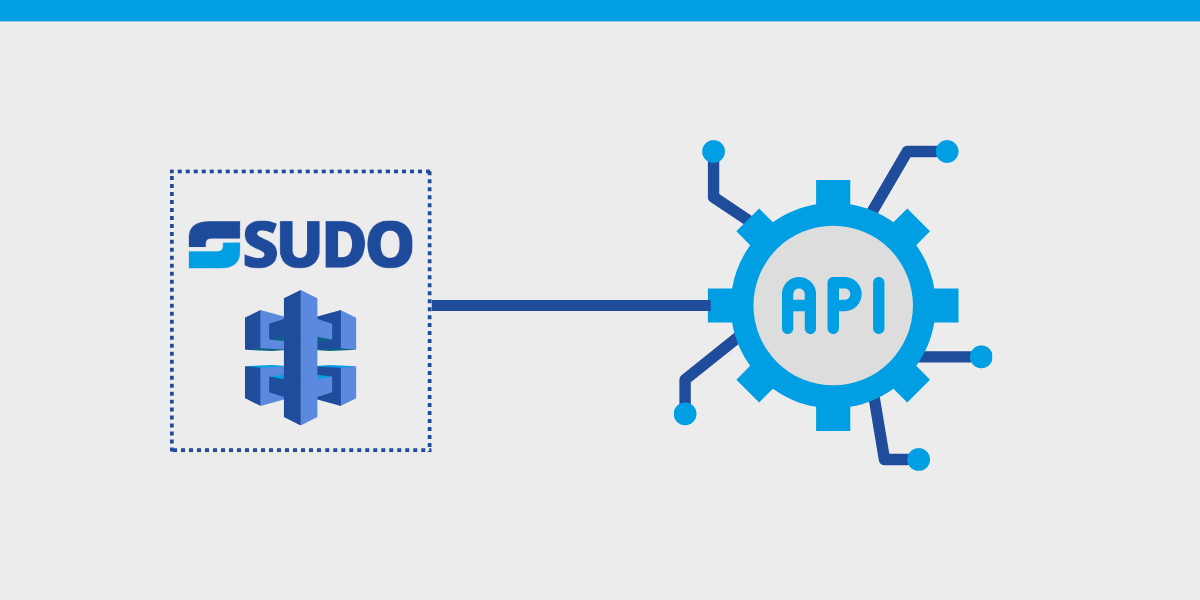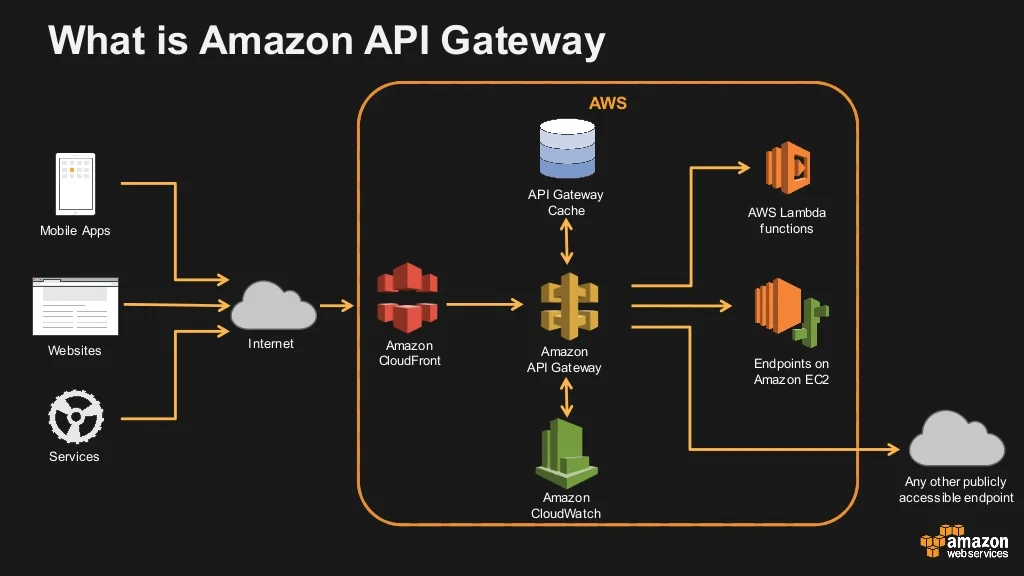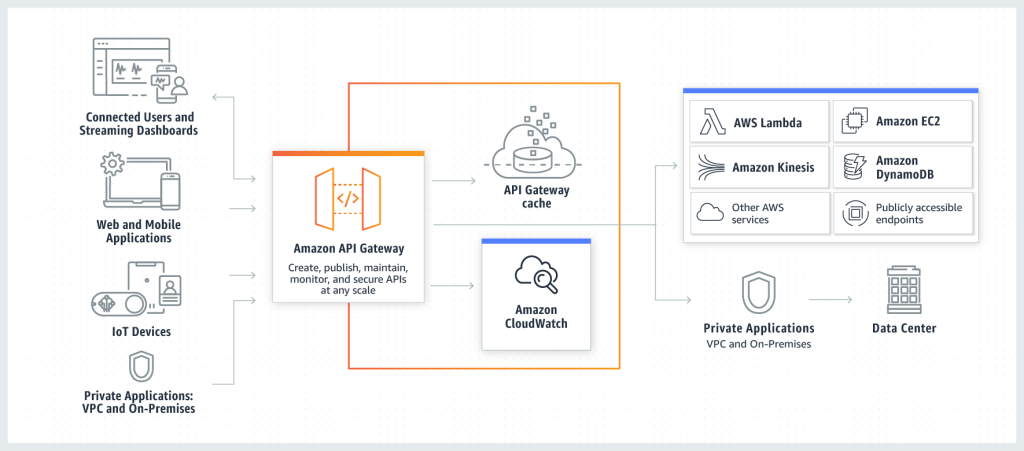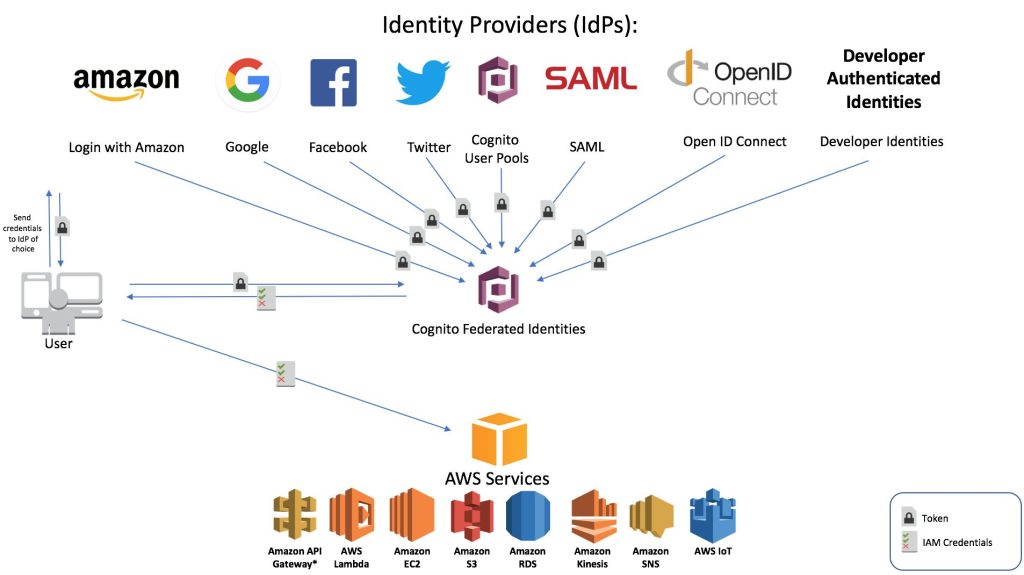
Amazon API Gateway is a fully managed service that makes it easy for developers to create, publish, maintain, monitor, and secure APIs at any scale.
With Amazon API Gateway; you can create RESTful, HTTP, and WebSocket APIs, which can be used to connect to various backends, including AWS Lambda, Amazon Elastic Container Service (ECS), and AWS App Runner.

What is Amazon API Gateway
API Gateway allows businesses to easily create and manage APIs, making it easy for developers to build and deploy new applications. This service makes it easy for businesses to build new applications and services without having to worry about the underlying infrastructure.
This allows businesses to focus on building their products and services, rather than worrying about the underlying infrastructure.

RESTful, HTTP, and WebSocket APIs
- RESTful APIs use the HTTP protocol and follow the principles of Representational State Transfer (REST) to create, retrieve, update, and delete resources. They are typically used for web-based systems and are designed to be lightweight and easy to consume.
- HTTP APIs are similar to RESTful APIs but they do not strictly follow the principles of REST. They use the HTTP protocol to create, retrieve, update, and delete resources and can also be used for web-based systems.
- WebSocket APIs use the WebSocket protocol to create a persistent, real-time connection between the client and the server. They are typically used for real-time applications such as chat, gaming, and other applications that require low latency and high-frequency updates.
API Gateway also enables businesses to easily monitor and secure their APIs.
With Amazon CloudWatch, businesses can monitor and log the usage of their APIs and set up alarms to notify them of any issues. Amazon API Gateway also allows businesses to easily secure their APIs with a variety of security features, including Amazon Cognito and AWS Identity and Access Management (IAM).
Advantages of using Amazon API Gateway
There are several advantages of using Amazon API Gateway:
- It is a fully managed service, so businesses don’t have to worry about the underlying infrastructure.
- It makes it easy for businesses to create and manage APIs.
- It enables businesses to easily monitor and secure their APIs.
- It allows businesses to easily build and deploy new applications and services.
Who uses Amazon API Gateway?
Many companies use Amazon API Gateway to create and manage APIs for their applications and services. Here are a few examples of companies that use Amazon API:
Netflix, Expedia, Capital One and Trello – uses Amazon API Gateway to expose its back-end services to its website and mobile apps. This allows the company to easily manage its APIs and secure them with Amazon Cognito.

These are just a few examples of the many companies that use Amazon API Gateway to create and manage APIs for their applications and services.
The use cases of API Gateway are diverse, from simple CRUD operations to complex data processing or machine learning inferences, as well as the ability to integrate with other AWS services such as Lambda, SNS, SQS, S3 and more.
7 Best Practices for Designing Your Amazon API Gateway

- Use Amazon Virtual Private Cloud (VPC) endpoints to access your Private API and Private Integration. This allows you to access the API Gateway and other AWS services without going over the internet, improving security and reducing costs.
- Use IAM authentication and authorization to control access. This allows you to grant access to specific users, roles, and groups, and to limit access to specific resources and methods.
- Use AWS WAF to protect your Private API from common web attacks such as SQL injection, cross-site scripting, and other OWASP top 10 threats.
- Use Amazon CloudWatch and AWS CloudTrail to monitor and log activity. This allows you to detect and investigate potential security issues, and to track usage and performance.
- Use AWS Key Management Service (KMS) to encrypt data at rest and in transit. This ensures that your data is protected from unauthorized access, even if someone gains access to your VPC or other parts of your infrastructure.
- Use AWS Certificate Manager to secure the communication between your client and your Private API, this allows you to use HTTPS protocol to encrypt the data in transit and secure the communication.
- Use Amazon SNS and SQS to decouple the backend service from the API Gateway, this allows you to add more scalability and resiliency to your architecture.
Conclusion
Amazon API Gateway is a powerful service that enables businesses to easily create and manage APIs, monitor and secure their APIs, and build and deploy new applications and services. With Amazon API Gateway, businesses can focus on building their products and services without having to worry about the underlying infrastructure. This makes it an essential tool for businesses looking to build and deploy new applications and services quickly and easily.
- Tags:
- Amazon API Gateway
- API